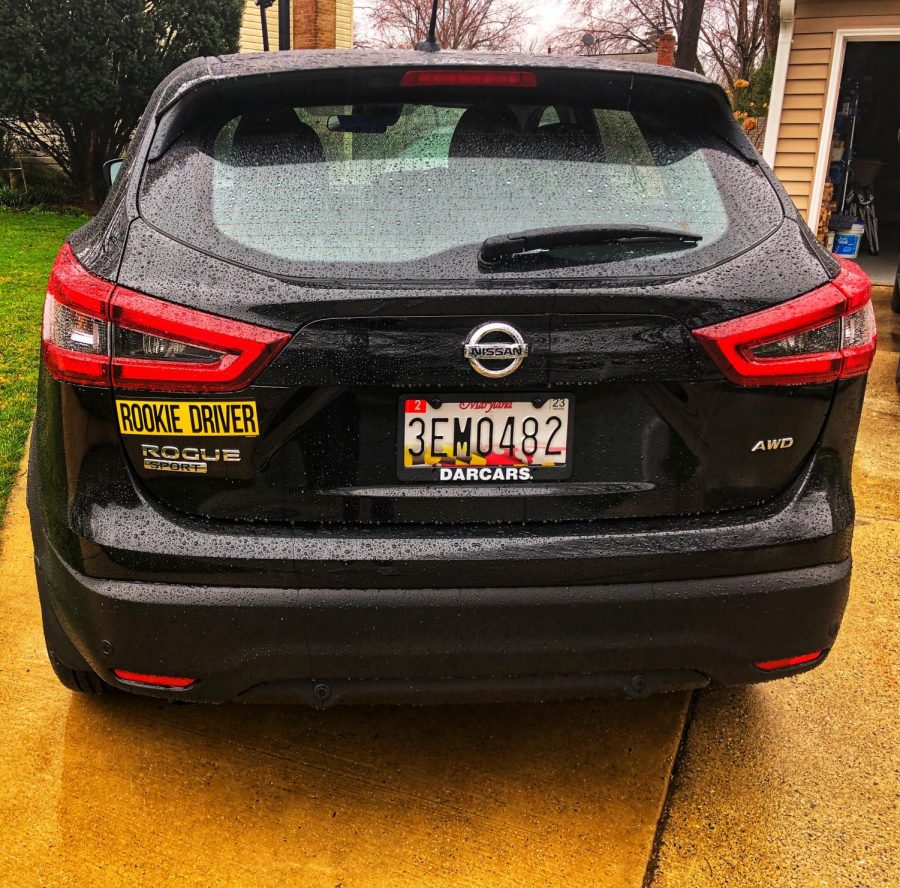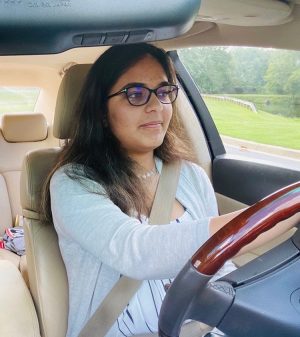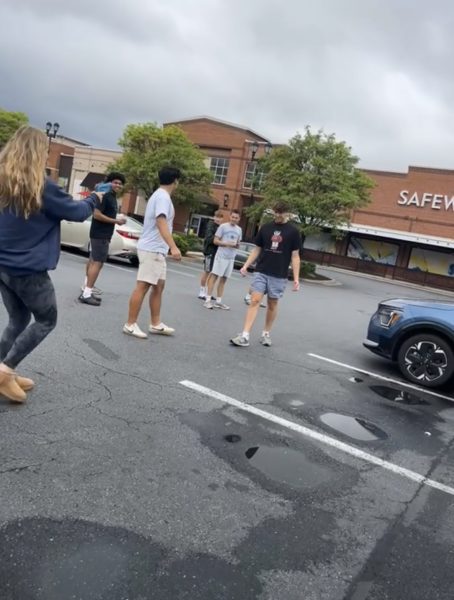Students are learning to drive despite Covid-19
The yellow “Rookie Driver” sticker tells people on the road to be patient with new drivers
Learning to drive is one of the most important life skills we take into adulthood. Driving shows we aren’t kids anymore, and that we have matured into self-sufficient young adults. But it’s not an easy process nor is it short.
Four steps are needed once you become of age to sit behind the wheel.
1. Take and pass the drivers education course
The drivers ed course is designed to teach you the basic rules of driving, the rules of the road, road signs and essential information key for your success. The length of the class depends on if you take it during the summer or during the school year. The summer version of the course is one class everyday for two weeks. The school year version is one class on Saturday and Sunday for five weeks. “I thought drivers ed was pretty good. Obviously it’s different taking it virtually, but I thought it was nice that they added some interaction. I liked the fact that we had breaks and that there were videos in the presentation” Sophomore Dylan Schmidt said. Schmidt also had some advice for new students. “I would tell them that drivers ed isn’t hard as long as you pay attention. One thing that really helped me was taking notes. I also thought that writing down the questions I got wrong was helpful because they went over the questions on the quiz from the previous unit. The final test is just a mixture of the questions from quizzes of the other units so as long as you understand the material, you should be fine” He said.
2. Study for and pass the learners permit test
Once you pass the final test for drivers ed, you must begin studying the “Maryland Driver’s Manual” from the Maryland Vehicle Administration to prepare for the learners permit test. This test is designed to reinforce everything you learned in drivers ed but in a 25-question format which you have 20 minutes to complete. “I would say that the process for getting a learners permit during Covid took a little longer and was more complicated because a lot of places like the DMV are limited in capacity” Sophomore Tyler Sauvajot said.
3. Collect the mandatory 60 practice driving hours with a parent (including 10 at night)
Next comes the practice. 60 hours of it. As you get more comfortable behind the wheel, you can begin driving in parking lots, smaller roads with fewer people on them, and eventually main roads. “For new drivers, I’d probably just tell them to try to get to know the dimensions of their car, start trying to park in a parking lot with no one around, and get out and check where you actually parked as opposed to where you think you did” Junior Elizabeth Nelson said.
4. Study for and pass the driving test
The last step is the most nerve-racking. It’s the final test. During Covid times, it may look different but nevertheless, the less stressed out you are, the easier it will be. Driving doesn’t have to be hard and people are finding more time to practice nowadays! “I started driving early on in the pandemic, which was nice because it was a covid-safe activity that I could do with my parents” Nelson said.
One of the benefits of the current school schedule is more time to practice driving. “Once you have a permit, it’s easier to get out and learn to drive because we have more free time with online school” Sauvajot said.
Your donation will support the student journalists of Thomas S. Wootton High School. Your contribution will allow us to purchase equipment and cover our annual website hosting costs.
Owen is a 2024 graduate.








